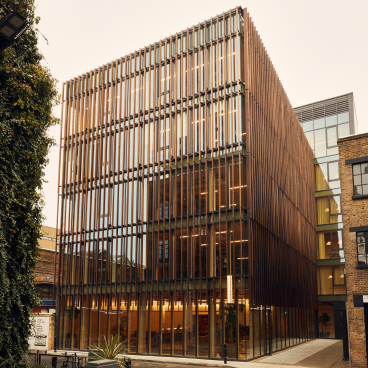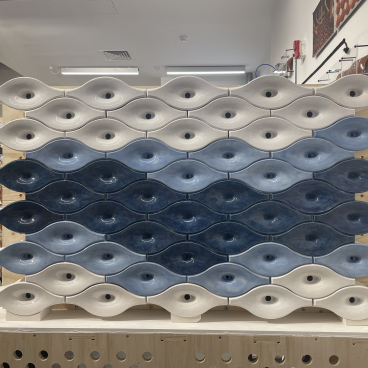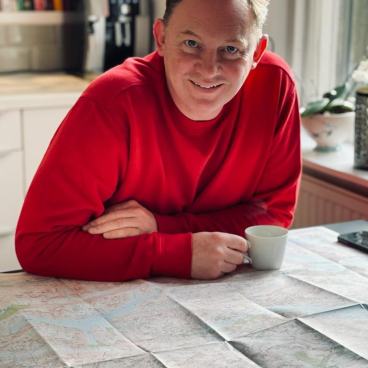Sarah Lloyd on leading a design team, designing trend-led technical fabrics and celebrating 30 years with Panaz.
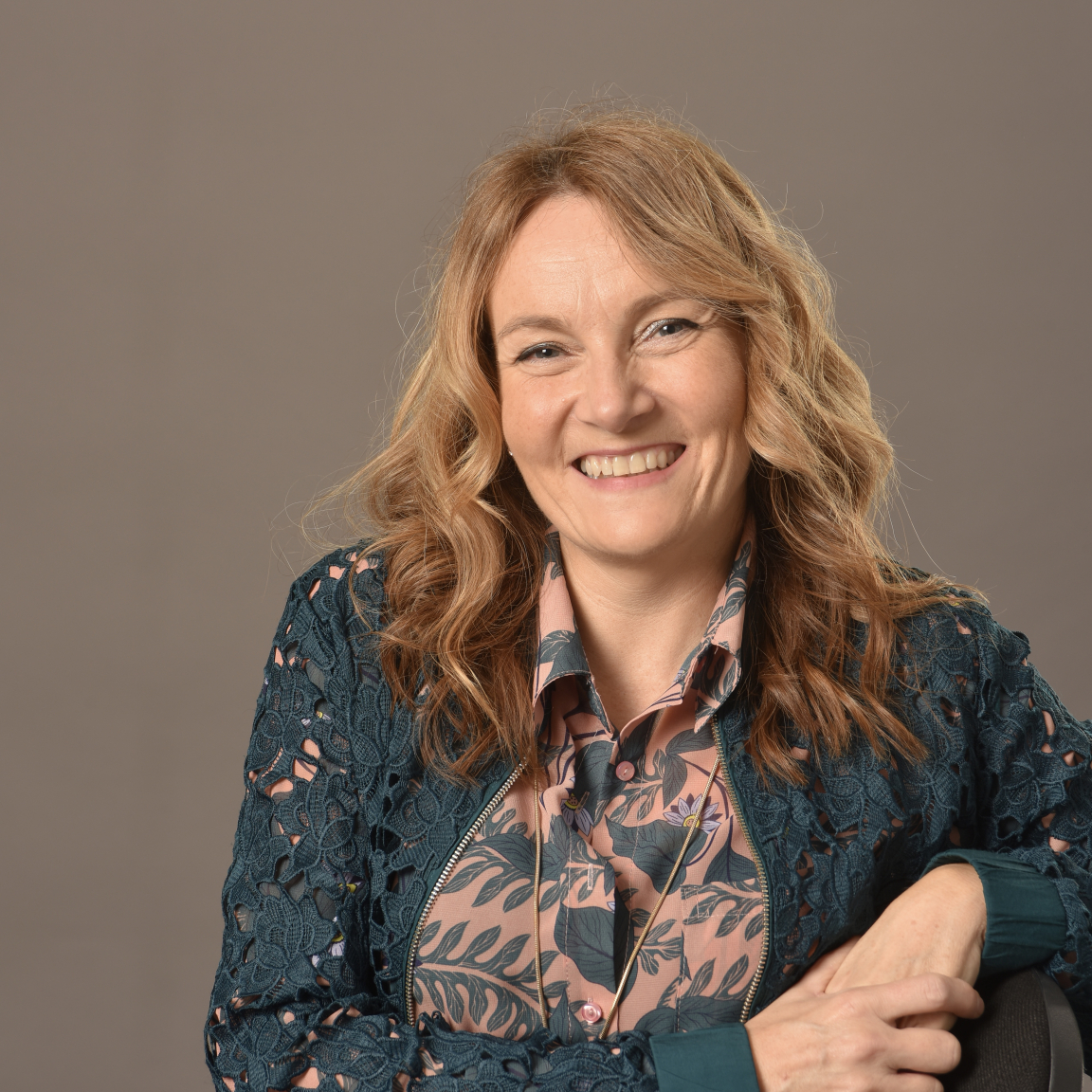
Sarah Lloyd is the Head of Design at Panaz and is responsible for the company’s in-house team of designers. Sarah has three decades of experience designing commercial fabrics which deliver functionality with a forward-thinking design approach.
Sarah works collaboratively with the team to create innovative fabrics that combine aesthetics with the latest textile technological advances. By keeping up to date with the latest trends they ensure their fabrics meet both design and performance demands.
Panaz is one of Europe’s leading suppliers of exceptional decorative fabrics for the hospitality, healthcare, cruise and corporate sectors. They focus on design excellence and differentiation through technical innovation and have almost 40 years’ experience in the design and manufacture of high-quality, flame retardant and technical fabrics.
We recently caught up with Sarah to find out more about her 30 year career milestone with Panaz, how textile technologies have evolved and the up-coming trends which are influencing the design team currently.
Firstly, can you tell us about your design background and when did your career at Panaz start?
“I started my career by studying Textile Design at The University of Huddersfield. My course mixed the usual creative disciplines with lectures about processes and manufacturing methods. This struck a chord with me and introduced me to the idea of blending science and art to deliver an outcome that’s functional, as well as attractive.
“After graduating, I joined Panaz in 1992 as a Design Assistant to the owner and Managing Director, Tony Attard. I was immediately drawn to the company’s artisan nature towards creativity and over the last 30 years I have worked alongside Tony, and now his son, Rollie, who became CEO last year and the wider team in a collaborative way to spearhead the creative development of the business.
“I have always loved creating and making, and it’s a real privilege to still be achieving this with Panaz three decades after I started my career with them.”
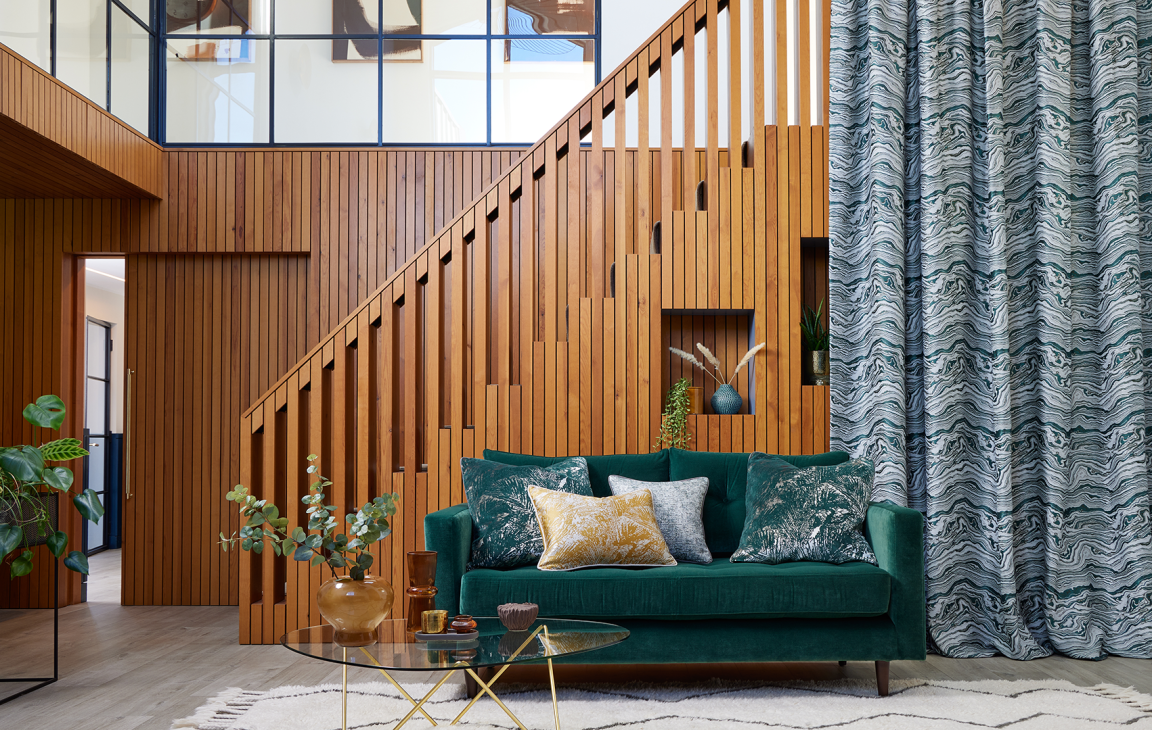
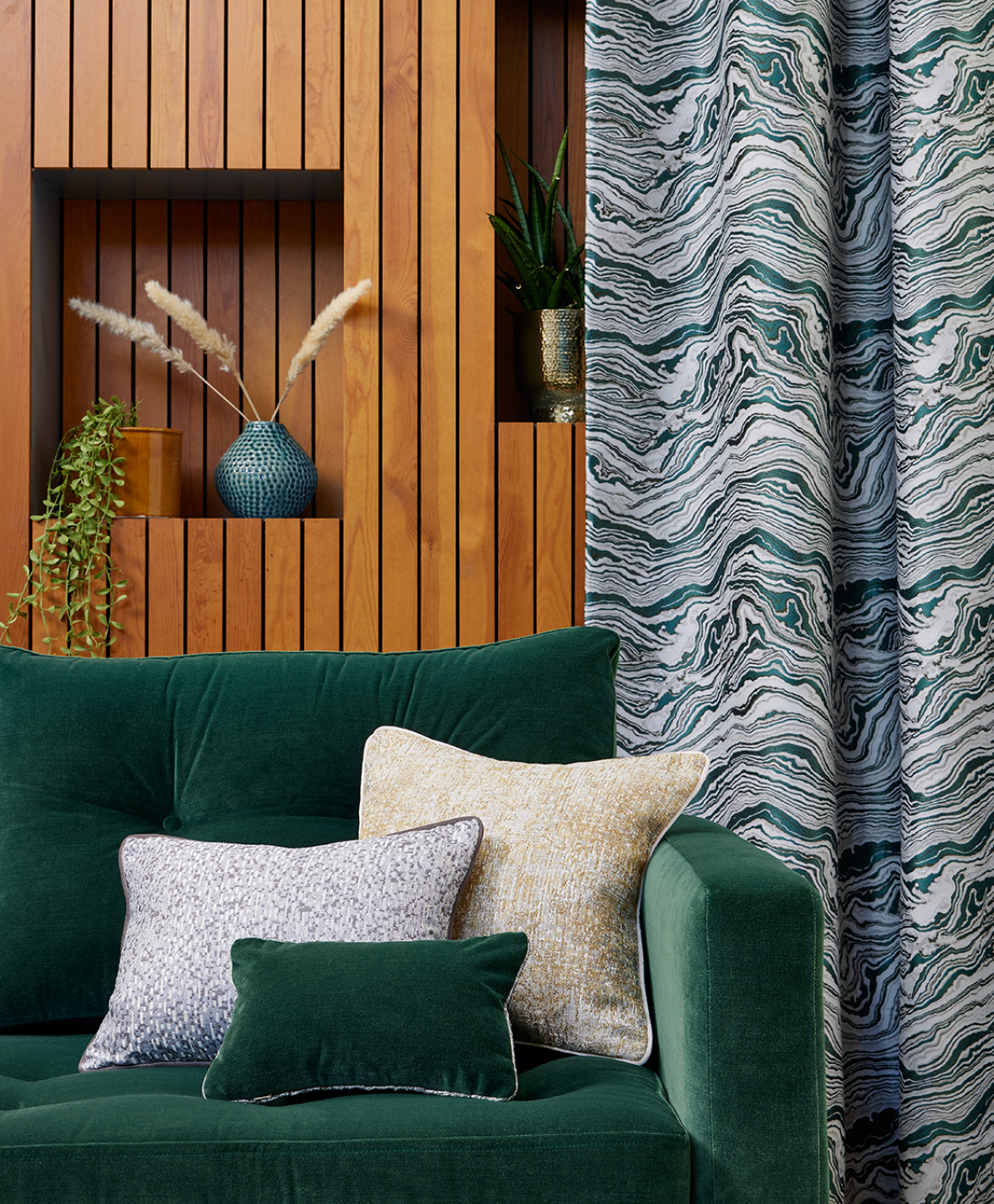
You are responsible for the in-house design team. Who makes up the team and how do you collaborate?
“Today, I continue to lead our team of in-house designers and drive the vision and presentation of our products to ensure they not only meet the needs of our customers and represent the latest trends but are functional enough to supersede the requirements and expectations of the commercial market.
“Our team of designers recently expanded with the appointment of a new Graduate Designer, who joined us following a summer placement. Both for me personally and as a business, we are dedicated to continuously supporting the next generation of talent to enter a diverse and welcoming industry.
“Another solution to meet customer needs is to offer custom bespoke design. The development team collaborate and draw on years of experience to offer designers across the globe an opportunity to turn their unique concepts into reality.”
Can you explain your design process, what’s the journey from the initial design ideas to the final collections?
“Everything we do is for our customers, turning beautiful concepts into commercialised designs that deliver first-class functionality and durability for their projects.
“This lies at the epicentre of the design process when we are exploring the latest trends and themes, so that when we create a new collection, we can be confident that the designs will not only set the standard in terms of aesthetics but deliver performance across the board.
“For example, when we decide upon a visual theme, we will consider the texture and structure of the cloth at the same time as the patterns and colour-ways. This ensures we create fabrics that are completely immersive.
“Ensuring the collections’ technical performance is also crucial. That’s why every design undergoes rigorous product testing and fire retardancy is a prerequisite.”
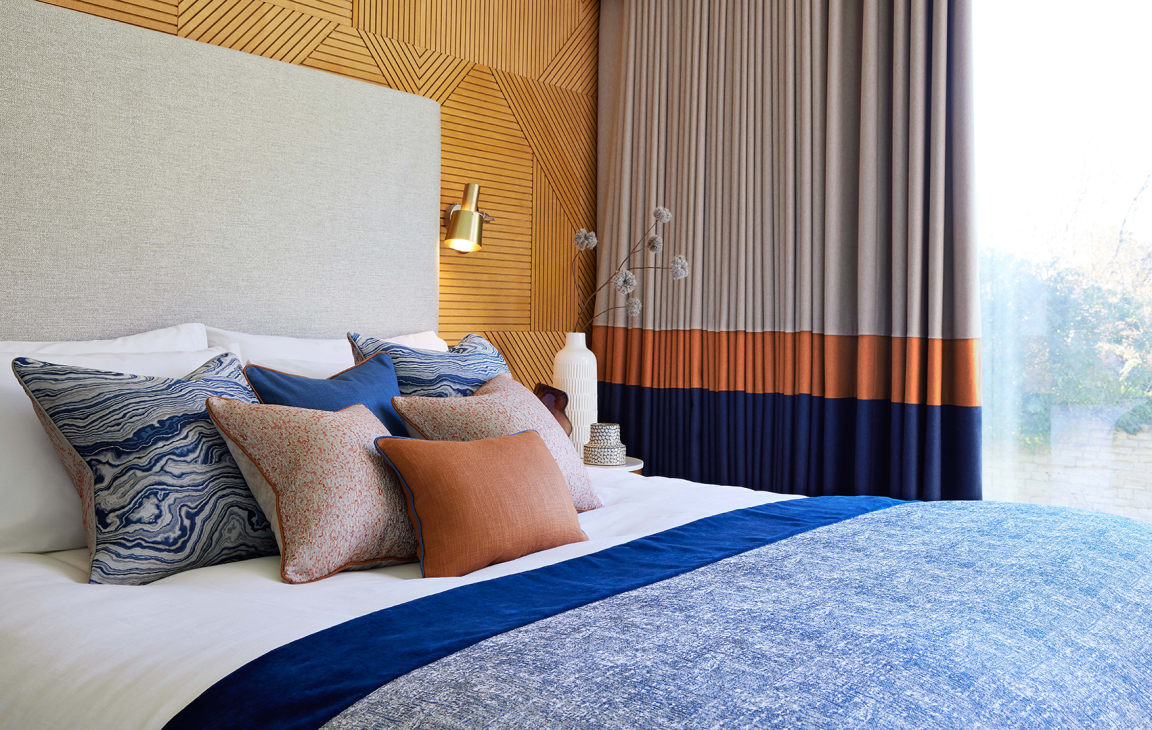
How has textile technology advanced over the last three decades since you first started at Panaz?
“When Panaz was founded in 1986, it pioneered low-water waste fabric printing, which is now the industry standard. All Panaz base-cloths are printed using sublimation printing techniques that involve no chemical processes.
“We pride ourselves on making a tangible impact by doing things differently, which is why in 2005 we adopted in-house digital printing methods that ensure no solvents are used and all printing inks are water soluble. A milestone for our production and design teams was introducing wide-width print production.
I love the opportunity to create designs that offer an unparalleled sense of scale and drama, something designers can be inspired by.”
What is key to creating successful commercial designs that are both trend-led and technologically advanced?
“By being creative with our approach and our continuous adoption of the latest technologies, we can utilise design as a way of problem solving. Central to this is contextualising where and how the product will be used. This is achieved by first undertaking visual research, such as looking at the latest trends in hotel design, and then exploring consumer preferences and expectations for that particular space.
“This enables us to identify whether the type of design, structure, and technology we are planning successfully align. Whilst visual design may appear the leading consideration when exploring trends, texture is just as important. Chunky yarns and irregular woven base-cloths continue to be popular with designers looking to evoke a sense of warmth and comfort throughout a scheme.
“However, if these types of fabrics are to be utilised for upholstery within a dining setting, staining is a major concern. It’s beneficial that we utilise technology in these instances that overcome these problems, without negatively impacting the visual identity of the fabric.
“The trend for custom bespoke designs is also continuing to grow in popularity, and here technology plays a crucial element in enabling us to achieve this.
“Whilst we offer extensive bespoke design capabilities, we have utilised the latest technologies to create our own digital fabric design software which enables designers to take complete control.
“The online platform allows designers to upload their own bespoke design or access Panaz’s own archive of over 2,500 of these. Users can easily re-colour, re-scale and re-define pattern repeats to create truly unique outcomes, that reflect individual project specifications. The software streamlines the design process throughout the entire chain, as the digital designs can be instantly shared and accessed by other project collaborators.”
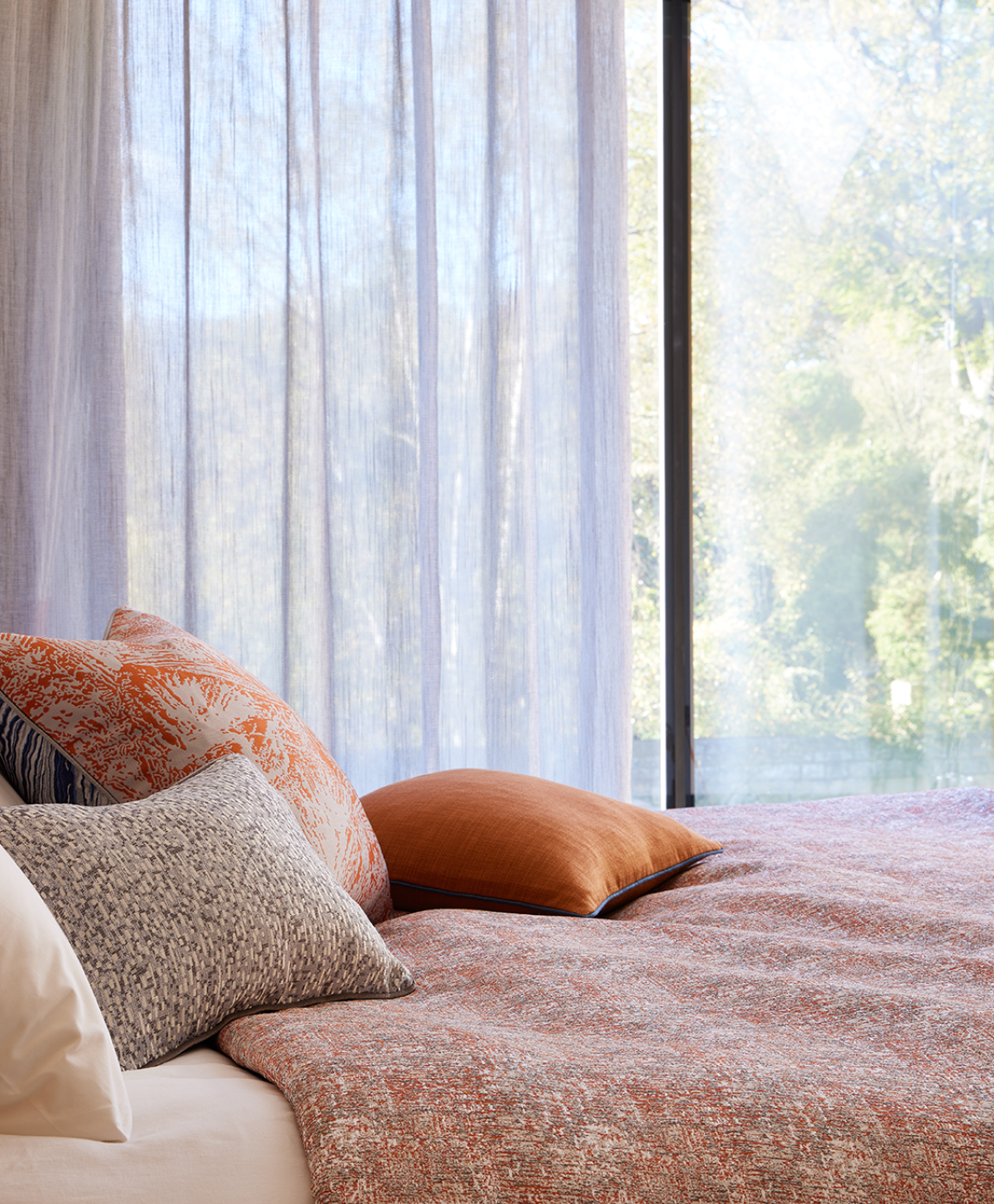
How have textile trends developed and evolved over the last 30 years?
“It’s safe to say there has been a multitude of trends come and go over the last 30 years, but with the various social platforms, they’ve become a lot more accessible in recent years. As a result, we have seen an increase in customisation as trends become more personal and meaningful to the individual.
“All aspects of society want to feel their creativity is valued, and trends enable us to embrace self-expression without judgement or fear. That’s what I love about trends, their inclusivity for all.
“Over the last year or so, we’ve seen a transition from minimalism to maximalism, and that’s definitely here to stay for the remainder of the year.
“The concept of embracing the old and re-loving it again also continues to grow in popularity, as we collectively take responsibility for the impact we are having on the planet and work together to identify solutions to minimise the negative effect our actions have.”
Can you tell us about any upcoming trends and/or design influences you are excited about?
“Maximalism is continuing to have its moment, and one of the main trends feeding into this demand is Reinvented Heritage. By combining nostalgic influences from different cultures and traditions, designers are achieving a revival of pattern through considered design that creates a true sense of romance.
“Designers are drawing influence from a myriad of sources, combining inspiration from textiles such as carpets and rugs, with other materials, such as tiles and furniture, to create sensory schemes for contemporary commercial spaces that represent transient lifestyles.
“This can be seen in our latest collection of structured jacquards for upholstery, Shalimar, which comprises two distinct designs featuring intricate patterns inspired by traditional tapestries. To create a truly sensory experience, the new structure enhances the aesthetic.”
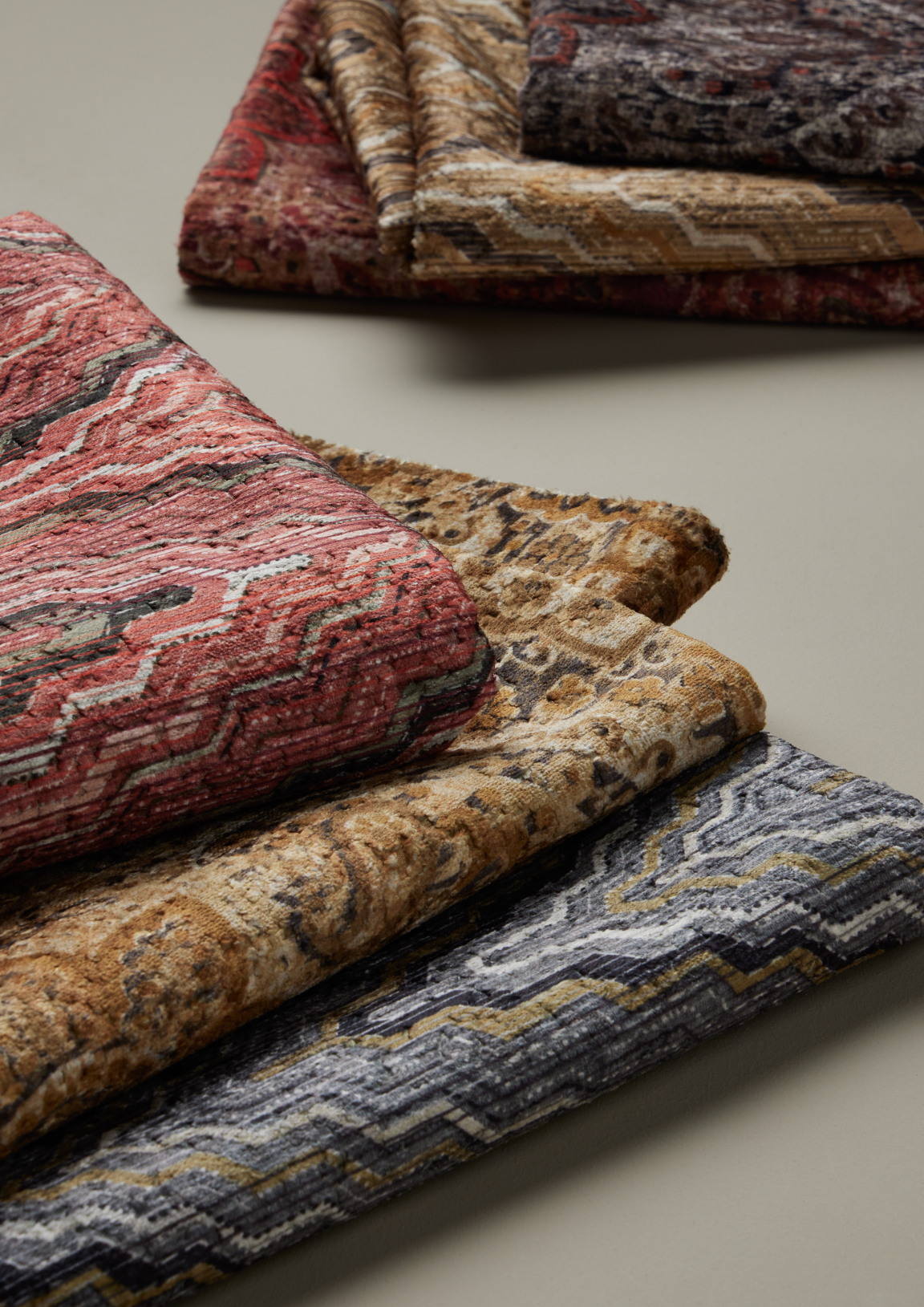
Finally, what’s next for the Panaz design team?
“The design studio at Panaz is very fast-paced, we enjoy collaborating across the development teams and work hard to deliver new collections for the hospitality, healthcare, workspace and cruise sectors to meet the requirements of our customers across the globe.
“Everything we strive to achieve at Panaz is to the highest possible standard and with meticulous attention to detail. We never settle for ‘just good enough’ and the team and I work in partnership to achieve this commitment on a daily basis.
“Over the last few months, the design team and I have been working on a very exciting collaboration, so we are excited to be launching the collection to the industry very soon.”



